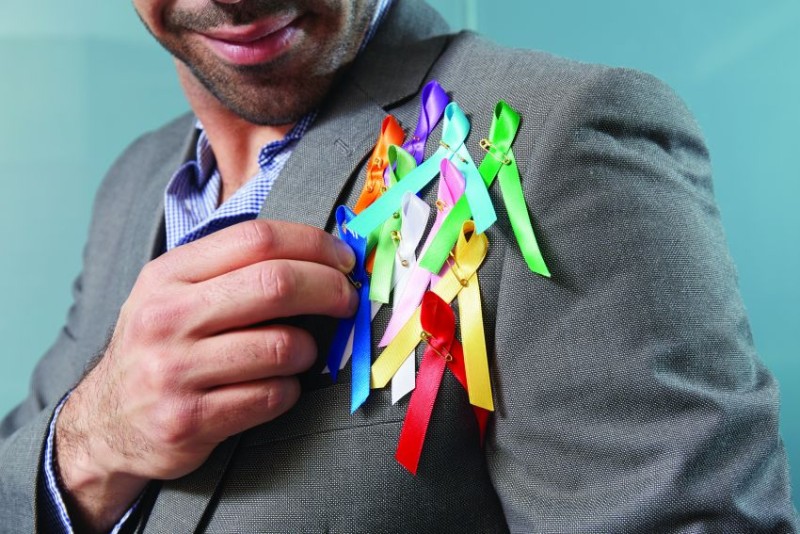Many charitable non-profit organizations deliver invaluable services by providing aid to those who are otherwise overlooked. But even philanthropic organizations are not immune to disruption. Demographic changes, wage stagnation, competition from new donation platforms, and other factors make it increasingly difficult for non-profit organizations to operate as usual. For many, survival depends on reinventing the donor experience.
Disruptive experiences ahead
Individuals account for about 70 percent of the $420 billion that are contributed to philanthropic non-profit organizations every year in the United States, according to GivingUSA. Industry reports estimate that about two-thirds of the U.S. population contribute to charities, but that number has been decreasing. The number of Americans engaged in charitable giving has trended downward since the beginning of the 21st century, finds a study by The Chronicle of Philanthropy.
The study lists several possible contributing factors for the decline in contributions. Generation X is smaller than the baby boomers, and millennials are weighed down by college debt, which means that fewer people are approaching their prime giving years and/or have less to give compared to previous generations. The study also noted that many nonprofits have lagged in engaging donors of color at a time when the country is growing more racially diverse.
And wealth is increasingly concentrated in fewer households. Though charitable donations increased by 1.6 percent between 2017 and 2018, the increase was driven mostly by donations of $1,000 or more, according to a report from the Fundraising Effectiveness Project, which analyzed 4,500 charities. Additionally, the number of total givers decreased, new donors dropped by 7 percent, and the overall donor retention rate was at 45.5 percent.
There is also a lot more competition for charitable contributions. About 20 years ago, there were about 630,000 registered charitable non-profit organizations in the U.S. Now there are 1.5 million, according to the National Center for Charitable Statistics. Additionally, crowdfunding platforms like GoFundMe and Indiegogo enable users to solicit funds directly from donors, further fragmenting the donor landscape. Facebook users have raised more than $1 billion for personal causes and nonprofits in the three years since the company launched the first of its fundraising features.
What donors want
It’s clear that retaining donors is more important than ever. But it takes far more than conventional fundraising efforts to keep today’s donors engaged, says Don Ryan, an analytic consultant and strategist who has worked in the private, nonprofit, and government sectors. Compared to previous generations, “younger donors such as millennials and Gen Xers have different expectations of non-profit organizations and how they should interact with people,” Ryan says. For one thing, donors are more digitally oriented. And trust in the non-profit sector is falling, much like trust is falling in most major institutions, he adds. “And so non-profit organizations must do a lot more than they’ve done in the past to stand out and earn people’s trust.”
With the average donor lifespan (the average number of years donors give consecutively) lasting only about five years, it’s imperative for charitable nonprofits to focus on expanding donor lifespans. “It’s not only that if a donor stays another year, that’s another year worth of giving,” Ryan says. “What you see when you look at the donor bases for various charities is that people who are giving year over year tend to give more money year over year, either because they give more frequently or they give larger gifts. So there’s a dual effect going on when you expand someone’s lifespan as a donor within the organization.”
However, charities have a bad habit of failing to develop donor relationships. Or in many cases, they bombard donors with impersonal postcards and emails reminding them to continue donating, giving the impression that donors are akin to piggy banks. It’s not uncommon, Ryan notes, to see organizations solicit donors for additional funding anywhere from 16 to 24 times a year. A more effective approach is to focus on the factors that drive long-term relationships with donors—i.e., the donor experience.
Rather than continuously pestering first-time donors for more funds, offer other ways for donors to stay involved with the organization. Organize letter-writing campaigns, ask for help organizing local public awareness events—anything that helps donors understand and experience the impact that they’re making by being part of a charitable organization.
People who have multiple relationships with a nonprofit have shown a “50 percent to 100 percent greater likelihood of renewing year over year,” Ryan says. “That’s why the path forward for a lot of these organizations is to focus on donor experiences. Nonprofits should be asking, how can we make the donor experience easier and more satisfying, so that they lead to greater involvement and relationships with the organization?”
Personalizing the donor experience
Randal Avolio, president and CEO of SEE International, a 45-year-old global non-profit organization that provides medical and educational services to restore sight to disadvantaged individuals, looks to engage donors with more than their wallets.
“We always want to show our donors how impactful their giving is,” Avolio says. “When there are so many causes out there to support, it is important to show just how impactful each dollar can be.” The California-based nonprofit uses different forms of media—videos, photos, newsletters, blogging, and social media—to share stories about volunteers and people whose vision has been restored.
The organization also offers ideas on how to get involved, such as helping write thank you notes, distributing vouchers, internships, and being a medical volunteer. It also provides a social media kit with photos and videos of the organization’s work that donors can personalize on their own social accounts. Along with being financially responsible and transparent—SEE holds the highest level of the GuideStar Seal of Transparency—successfully working with volunteers is about “forming and maintaining a meaningful connection with these people who are making world-changing work possible,” Avolio says, “and inspiring them to stay on as part of your team.”
Using data to improve donor experiences
Nonprofits need to manage their operations and donor engagement efficiently. Helping donors and volunteers feel more appreciated and involved also requires understanding individual donors and their preferences. However, like the commercial sector, non-profit organizations struggle to connect and analyze disparate types of data, let alone act on data insights.
More than half of nonprofits (53 percent) find it easy to collect program data, but only 47 percent say it is easy to analyze that data, according to a recent Salesforce Nonprofit Trends report, which surveyed 450 non-profit leaders. And only 45 percent use data analytics tools, with an additional 30 percent planning to use such tools within two years.
In addition to investing in a data repository strategy and solution, the next step, Ryan explains, is to figure out what the optimal engagement strategy is for creating meaningful interactions with donors and volunteers. “It is a matter of understanding, at the individual level as best you can, who am I dealing with,” he says. “What types of the capacity do they have to give and how can I best interact with them to make this a good experience for both of us?”
Personalization goes a long way, notes Marissa Fayer, founder and CEO of HERHealthEQ, a three-year-old nonprofit focused on women’s health in developing countries. “For personal contacts, all communication is done one-on-one through dedicated emails from either myself or from the person who is the connection point,” Fayer says. “We feel that it is personal and more effective, especially since we are only a few years old and still have a very personal connection to the people who support us.”
HERHealthEQ has about 400 individual donors and uses data and CRM tools such as Constant Contact, YesWare, and HubSpot to manage communications and its CRM database. In terms of improving its marketing, the organization is looking to improve on targeting and tailoring its content according to different interests.
Fayer says she’s also interested in understanding what resonates with existing and potential donors. “Donor obtainment, engagement, and management is something I think about daily, if not hourly,” Fayer says. “And followers, impressions, engagement, clicks and viewership—things like that are important for us to see what resonates because we don’t ever want to be just an organization that’s asking for money to do our work. We want to also provide a service to make sure that we are giving back to the people who are supporting us and that follow us and that want to hear more from us.”

















